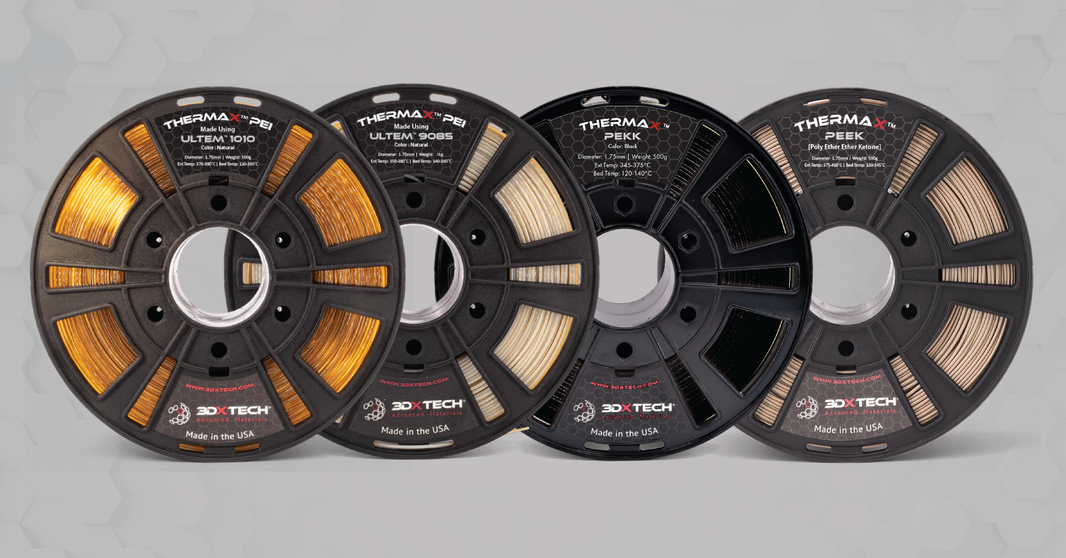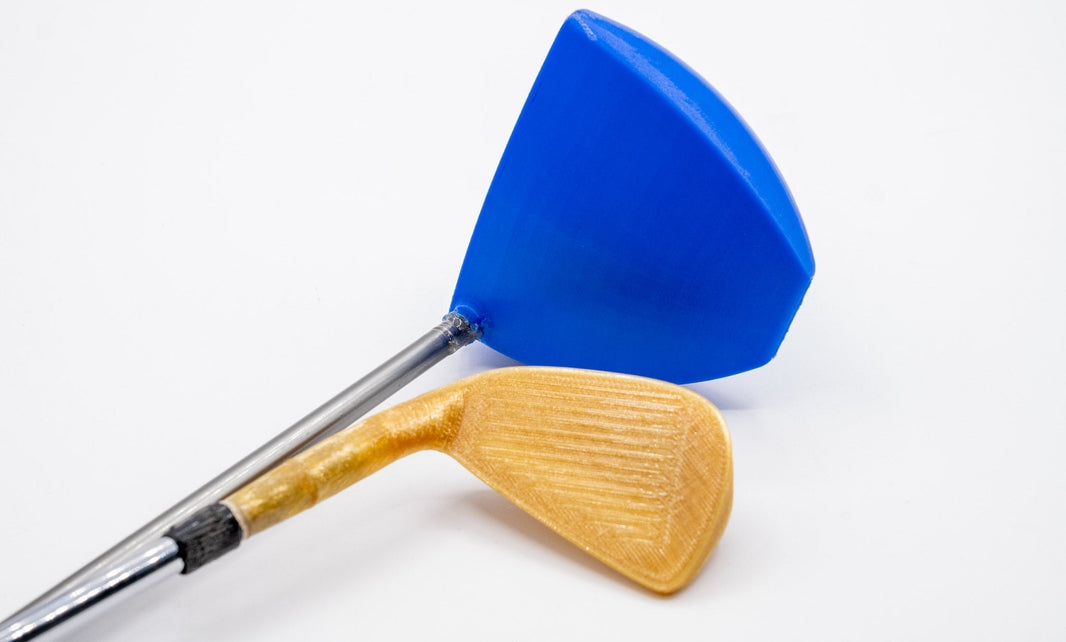Understanding Reinforced Filaments
Reinforced 3D printing filaments have become an industry favorite for high-strength prints. Much like adding rebar to concrete, introducing additives to a 3D printed part helps form a more cohesive structure within the print. This allows the printed part to experience greater stiffness and dimensional stability. Many different additives like carbon nanotubes, kevlar, and even ceramic have been used as reinforcements in 3D printing filament. Still, carbon fiber and glass fiber have to be the most popular reinforcements by far. Both carbon fiber and glass fiber offer improved performance over standard filaments, but how do you choose the right one for your 3D printing project? Here at 3DXTECH, we’ll break down the difference between glass fiber and carbon fiber filaments so you can decide which is right for your project.
What is Glass Fiber Reinforced Filament?
Glass fiber is a durable, lightweight material that's widely used in many industries. Traditionally, it has been used in applications like boat hulls, car bodies, and construction panels, where its durability and cost-effectiveness make it ideal for large-scale, high-stress environments. In the additive manufacturing industry, it’s used to increase the strength and impact resistance of 3D printed parts. Filaments reinforced with glass fiber, such as our FibreX line, are known for being tough and flexible. These augmented characteristics make glass fiber filaments ideal for parts that will face extreme stress and wear. Filaments using glass fiber additives are also more affordable than carbon fiber options, which makes glass fiber an attractive option for cost-sensitive projects. However, it doesn’t offer the same stiffness as carbon fiber.
Another popular trait of glass fiber filaments is the variety of color options available. Unlike carbon fiber, which is inherently dark due to its material composition and cannot be dyed or colored, glass fiber filaments are commonly offered in a wide range of colors. This adds versatility for applications where aesthetics matter, allowing users to match brand colors or enhance the visual appeal of their final product. For example, our glass fiber Obsidian can be offered in 9 wildly vivid colors, all while retaining the strength and durability expected from a reinforced filament.
What is Carbon Fiber Reinforced Filament?
Carbon fiber reinforced filament, by contrast, offers superior stiffness and a high strength-to-weight ratio. A caveat of carbon fiber’s stiffness to consider is the respective brittleness that can be observed in carbon fiber filament. Technically, carbon fiber filled material takes more energy to fracture than unfilled, but there’s a greater effect you see when it fractures.
Filament reinforced with carbon fiber is much lighter compared to glass fiber and provides excellent dimensional stability, which is crucial for applications requiring precision. For example, typical ABS has a shrink rate while cooling of about 0.5%, while the shrink rate of carbon fiber ABS is about .1%. The upside of this reduced shrinkage is that your parts will be more 'true to print' than unfilled. Carbon fiber filled filaments, such as our CarbonX line, are also perfect for lightweight, yet strong, parts, such as drones or automotive components. However, the increased performance comes with a higher price tag and more abrasiveness, requiring hardened steel nozzles for printing.
Another important idea that needs to be addressed is that 3D-printed carbon fiber parts are different than what one may imagine when considering traditional carbon fiber parts. The traditional carbon fiber method involves using continuous fibers to maximize strength, while carbon fiber filament, which contains chopped fibers, is meant to enhance rigidity and reduce weight in 3D printed parts.
Key Differences: Strength, Weight, and Cost
When it comes to strength, both carbon fiber and glass fiber additives can increase the durability of your prints, but glass fiber excels in flexibility, while carbon fiber offers more stiffness. Carbon fiber’s lightweight nature gives it an edge in applications where weight savings are essential, but glass fiber is better suited for parts that require toughness. Considering the cost, glass fiber reinforced filaments are generally more affordable, making them a great choice for cost-sensitive functional parts, while carbon fiber is often reserved for high-performance projects.
Choosing Based on Application Needs
The best reinforced filament for your project depends on the specific properties you need. If your project will be experiencing heavy impacts or stress, then glass fiber filaments will likely be the right choice for you. Glass fiber is ultimately ideal for any mechanical parts, enclosures, and tools that will need to withstand a beating. On the other hand, if your project requires maximum rigidity and low weight (like in aerospace or automotive), then carbon fiber will be your best bet to get the performance you’re looking for.
Making the Right Choice
Both glass fiber and carbon fiber filaments have their strengths, but the choice comes down to what you need from your print. Consider the demands of your project: if it’s flexibility and affordability, glass fiber is your go-to. If you need high stiffness and lightweight, carbon fiber is the better option. Regardless of what you choose, 3DXTECH has one of the largest catalogs of carbon fiber and glass fiber filaments that will allow you to produce stronger, more durable parts than standard materials.






